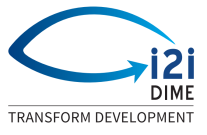R Coding Practices
This article lays out some best practices for coding using R. Though it is possible to use R without it, the RStudio integrated development environment makes its use easier and is the standard among R users. There is not a single set of best practices and the guidelines below are suggestions that can and should be adapted the each project's needs, as well as users' preferences
Read First
- RStudio
- Comments
- Objects names
Package installation
R packages are collections of functions, data, and documentation that extend the functionality of base R. They are essential for everything from data cleaning to statistical modeling and visualization.
Installing CRAN Packages
CRAN (The Comprehensive R Archive Network) is the primary repository for R packages.
Here's an example to install a package from CRAN:
install.packages("tidyverse")
To install multiple packages:
install.packages(c("tidyverse", "haven", "data.table"))
Comments and script structure
Running code that returns the right result is only the first half of the job. The other half is making sure your code is easy to follow, test, and reuse. This helps teams catch mistakes, audit decisions, and collaborate more effectively. Poorly structured code increases the risk of errors.
1. Use header comments to introduce each script:
##################################################
# Script: 01_clean_data.R
# Purpose: Clean raw baseline data
# Author: First Last
# Date: 2025-05-30
# Inputs: data/raw/baseline.csv
# Outputs: data/clean/baseline_clean.rds
##################################################
Naming objects
Style and white space
Loops in R
Tidyverse
Version control
RStudio projects
Additional Resources
Related DIME Analytics Trainings
- Training session recording on Introduction to R Shiny
- Training session recording on Big data workflows with R
data.table
